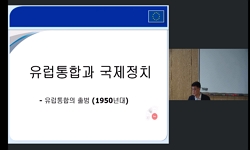This paper examines the interplay between the strength of network externalities with both degrees of compatibility and product substitutability in a vertical structure. As alternative solutions to double marginalization, we compare the efficiency betw...
http://chineseinput.net/에서 pinyin(병음)방식으로 중국어를 변환할 수 있습니다.
변환된 중국어를 복사하여 사용하시면 됩니다.
- 中文 을 입력하시려면 zhongwen을 입력하시고 space를누르시면됩니다.
- 北京 을 입력하시려면 beijing을 입력하시고 space를 누르시면 됩니다.
https://www.riss.kr/link?id=A108086288
- 저자
- 발행기관
- 학술지명
- 권호사항
-
발행연도
2022
-
작성언어
-
- 주제어
-
KDC
322
-
등재정보
SCOPUS
-
자료형태
학술저널
- 발행기관 URL
-
수록면
28-54(27쪽)
- DOI식별코드
- 제공처
-
0
상세조회 -
0
다운로드
부가정보
다국어 초록 (Multilingual Abstract)
This paper examines the interplay between the strength of network externalities with both degrees of compatibility and product substitutability in a vertical structure. As alternative solutions to double marginalization, we compare the efficiency between integration case and vertical separation in centralized Nash bargaining with a two-part tariff under Cournot and Bertrand competition. In contrast to conventional wisdom, the equivalence between vertical separation under a two-part tariff and vertical integration never holds in network market with compatibility. Consequently, we show that regardless of the strength of network externalities with both degrees of compatibility and product substitutability, industrial profits, social welfare and consumer surplus are always higher under vertical separation in centralized Nash argaining than under integration case. Thus, under Cournot and Bertrand competition, double marginalization is necessary to implement the efficient outcomes, except for the case of full compatibility.
목차 (Table of Contents)
- 1. INTRODUCTION 2. RELATED LITERATURE 3. THE MODEL 4. ANALYSIS 5. RESULTS 6. DISCUSSION 7. CONCLUDING REMARKS REFERENCES
- 1. INTRODUCTION 2. RELATED LITERATURE 3. THE MODEL 4. ANALYSIS 5. RESULTS 6. DISCUSSION 7. CONCLUDING REMARKS REFERENCES
동일학술지(권/호) 다른 논문
-
- 한국계량경제학회
- 유혜미(Hye Mi You)
- 2022
- SCOPUS
-
Return Predictability using an Endogenous Regime Switching Model
- 한국계량경제학회
- 정민수(Minsoo Jeong)
- 2022
- SCOPUS





 KCI
KCI 스콜라
스콜라






